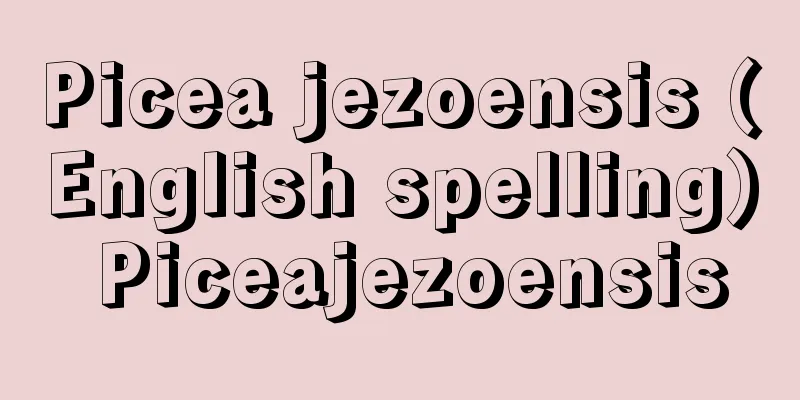Jokei - Jokei

|
A Buddhist sculptor of the Kei school (Shichijo Butsusho) in the Kamakura period. It is thought that there were three Buddhist sculptors of this name at the time. They were Daibutsushi Hosshi Jokei, Higo Hogen Jokei, and Echizen Hokkyo Jokei (years of birth and death unknown for all of them). The first, Hosshi Jokei, is said to be a disciple of Kōkei, and created the statue of Vimalakirti in the East Golden Hall of Kofuku-ji Temple in 1196 (Kenkyu 7), and the statues of Bonten and Taishakuten at the same temple in 1202 (Kennin 2). There are records that the Kongō Rikishi statues at the same temple were also created by him during the Kenkyu period (1190-1199). He produced realistic works incorporating the style of Song dynasty sculpture, mainly at Kofuku-ji Temple and Kasuga Taisha Shrine, and showed excellent skill. The second Higo Hogen Jokei produced six statues of the Six Kannon Bodhisattva and a statue of Bishamonten (Tokyo University of the Arts) for Daihoon-ji Temple in Kyoto in 1224 (Jo-o 3), a statue of Shokannon Bodhisattva at Kurama-dera Temple in 1227 (Karoku 3), a statue of Kongorikishi at Sekigan-ji Temple in Hyogo in 142 (Ninji 3), and a statue of Kongorikishi at Yokozo-ji Temple in Gifu in 156 (Kencho 8), and there is a record that he also traveled to Kamakura. In the inscriptions on the statues, he lists his name as "Tsubosaka resident" and "Southern school", so he may have been a member of the Kei school, but it is possible that he was independent in the Nara region for some reason, and he was even more strongly influenced by the Song style than the first Jokei. The third Echizen Hokkyo Jokei appears in records from the late 13th century, during the late Kamakura period, but no of his works remain, although we know of his having repaired the statues of the Bodhisattva Nikko and Gakko in the New Hall of Horyu-ji Temple. [Akio Sato] Source: Shogakukan Encyclopedia Nipponica About Encyclopedia Nipponica Information | Legend |
|
鎌倉時代の慶派(けいは)(七条仏所)の仏師。この名の仏師は当時3人いたと考えられる。大仏師法師(ほっし)定慶、肥後法眼(ひごほうげん)定慶、越前法橋(えちぜんほっきょう)定慶(いずれも生没年不詳)がそれである。第一の法師定慶は康慶の弟子ともいわれ、1196年(建久7)に興福寺東金堂維摩居士(ゆいまこじ)像、1202年(建仁2)に同寺梵天(ぼんてん)・帝釈天(たいしゃくてん)像をつくっており、同寺の金剛力士像も建久(けんきゅう)年間(1190~99)の彼の作とする記録がある。興福寺や春日(かすが)大社を中心に宋(そう)代彫刻の作風を加味した写実的な傾向の制作を行い、優れた技量を示した。第二の肥後法眼定慶は、1224年(貞応3)に京都大報恩寺の六観音像6躯(く)と毘沙門天(びしゃもんてん)像(東京芸術大学)、27年(嘉禄3)に鞍馬寺(くらまでら)聖観音像、42年(仁治3)に兵庫石龕寺(せきがんじ)の金剛力士像、56年(建長8)に岐阜横蔵寺の金剛力士像などの作があり、鎌倉へも下向したという記録がある。彼は造像銘文で自分の名に「坪坂住」とか「南方派」と肩書しているので、慶派一門ではあろうが、なにかの事情で奈良地方で独立していたかとも思われ、第一の定慶よりさらに宋風の影響が強い。第三の越前法橋定慶は鎌倉後期の13世紀末の記録に現れるが、法隆寺新堂の日光・月光菩薩(ぼさつ)像などの修理の事実があるだけで、作品は残っていない。 [佐藤昭夫] 出典 小学館 日本大百科全書(ニッポニカ)日本大百科全書(ニッポニカ)について 情報 | 凡例 |
Recommend
Imperial property - Koushitsuzaisan
Property used by the Imperial Family in the countr...
Bulbous bow - Bulbous bow
A ship's bow has a bulbous bulge below the wa...
Kawana
An area facing Sagami Bay in the eastern part of ...
"Ishin March" - Ishin March
…Today, baton twirlers, who spin batons in a spec...
Cultural evolutionism
...The view of culture as an adaptive system sees...
"Isanmondou"
…At the age of 35, he traveled to Beijing as an a...
Kajikawa Kyujiro
Years of birth: unknown. A maki-e artist from the ...
shrike-thrush
...Because its cry is a flute-like sound, it is c...
Belt-shaped city
A city that has developed in a strip shape with a ...
Monostroma grevillei (English spelling) Monostromagrevillei
…[Mitsuo Chihara]. . . *Some of the terminology t...
Loire, Val de (English spelling) LoireValde
…[Yugo Ono]. . … *Some of the terminology that me...
Church Sonata (English: sonata da chièsa)
Along with the chamber sonata, this is an importan...
Spiral flower - Spiral flower
An annual or semi-shrub of the Tilia family found ...
National Economic Committee (English: National Economic Committee)
One of the central agencies for the economic const...
Komi-Permjak (English spelling) KomiPermjak
…Zyryan is called Komi in Russia, and is spoken a...


![Monzen [town] - Monzen](/upload/images/67cd084528fef.webp)






